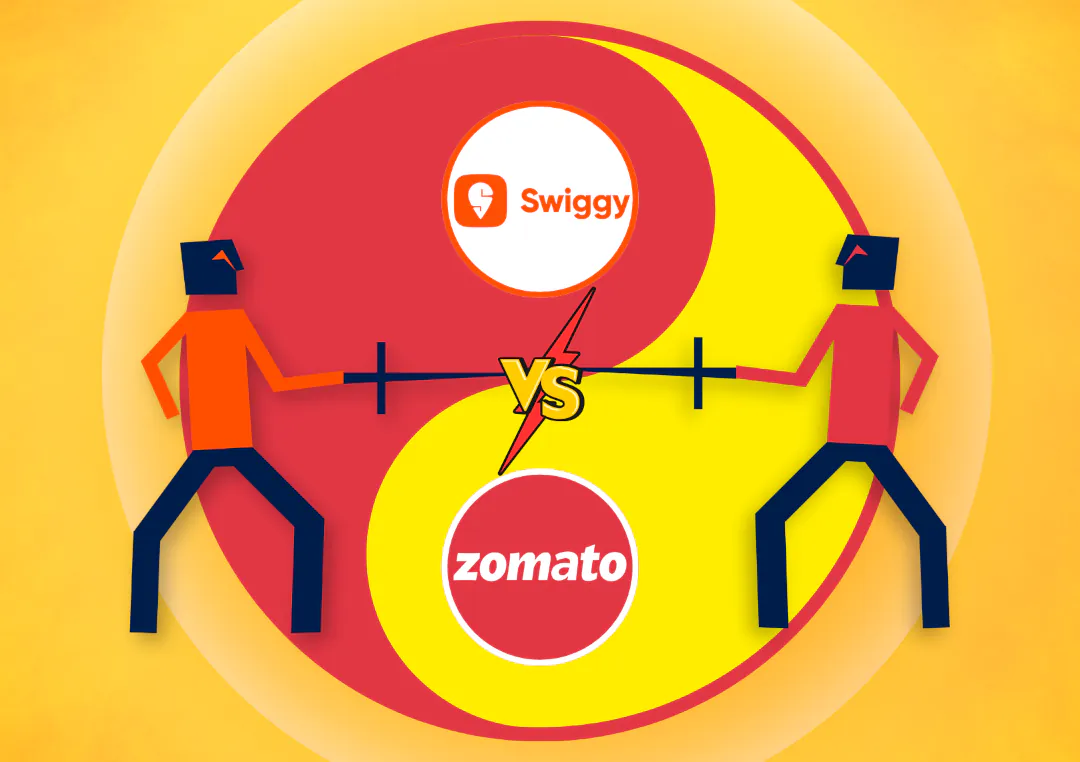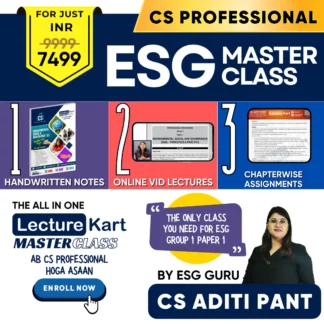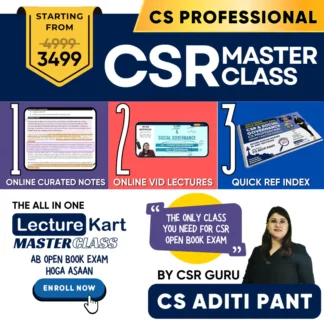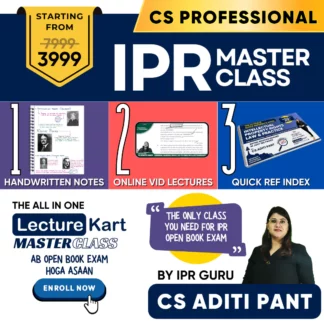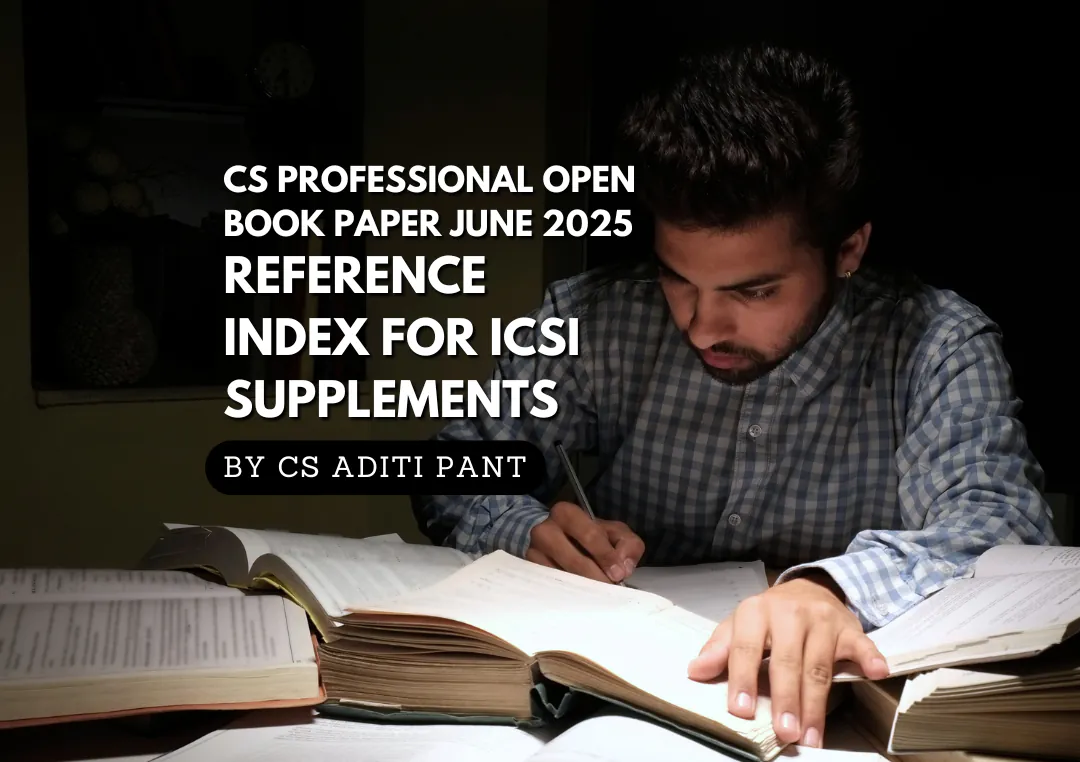
Pass Your CS Professional Open Book Exams Easily: Get Your Reference Index for ICSI Supplements
The ICSI CS Professional Open Book Exams for June 2025 are coming soon, and you’re probably studying hard. You’ve downloaded the official ICSI supplement study materials – they have a lot of information, but sometimes it’s hard to find what you need quickly during the exam. Do you spend a lot of time searching through many pages, trying to find one answer?
What if there was a simpler way? A way to quickly find exactly what you need, right when you need it?
I’ve helped many students pass their exams. I know how tricky open-book exams can be. It’s not just about knowing the answers; it’s about finding them fast. That’s why I’ve made a special tool just for you: LectureKart’s easy-to-use PDF Guides for the ICSI CS Professional Open Book Exam materials.
These are not just normal lists. They are your secret weapon to do well in your exams. Imagine having a detailed list for each chapter that tells you the exact page number for every important topic, every key section, and every important piece of information in the official ICSI study materials. No more searching for a long time, no more wasted minutes. Just quick and correct answers.
Why are these PDF Reference Index(s) a must-have for your CS Professional June 2025 exams?
- Find Answers Fast: Quickly locate important information, saving you valuable time during the exam.
- Less Exam Worry: Go into the exam feeling calm and sure, knowing you have a reliable way to find answers.
- Do Better in Exam: Focus on using your knowledge instead of getting lost in the study materials.
- Be Smarter than Others: Get an advantage by finding answers quicker and better than other students.
I’ve put all my knowledge and many hours into making these guides. I want them to be the most complete and easy-to-use tools for you. This is not just about giving you answers; it’s about helping you do your best.
Ready to make your CS Professional Open-book exam preparation much easier?
Don’t lose marks because you can’t find information quickly. Download your FREE sample PDF guide today and see how it helps you. See for yourself how LectureKart’s carefully made tools can improve your performance and give you the confidence to ace your CS Professional exams.
And once you see how helpful these PDFs are, you’ll understand how much I want you to succeed. Check out all the other study materials, full courses, and special guides made by CS Aditi Pant – everything is designed to make your journey to becoming a Company Secretary smooth, smart, and successful.
Use the links below to Download FREE Reference Index PDFs for Supplement Material Issued by ICSI for CS Professional Open Book Exam 2025
So that’s it for today guys. Everyone at LectureKart wishes you a very Good Luck for upcoming attempt. You are going to be awesome. Trust yourself and your preparation. Last but not the least, share this with your friends and study mates.

